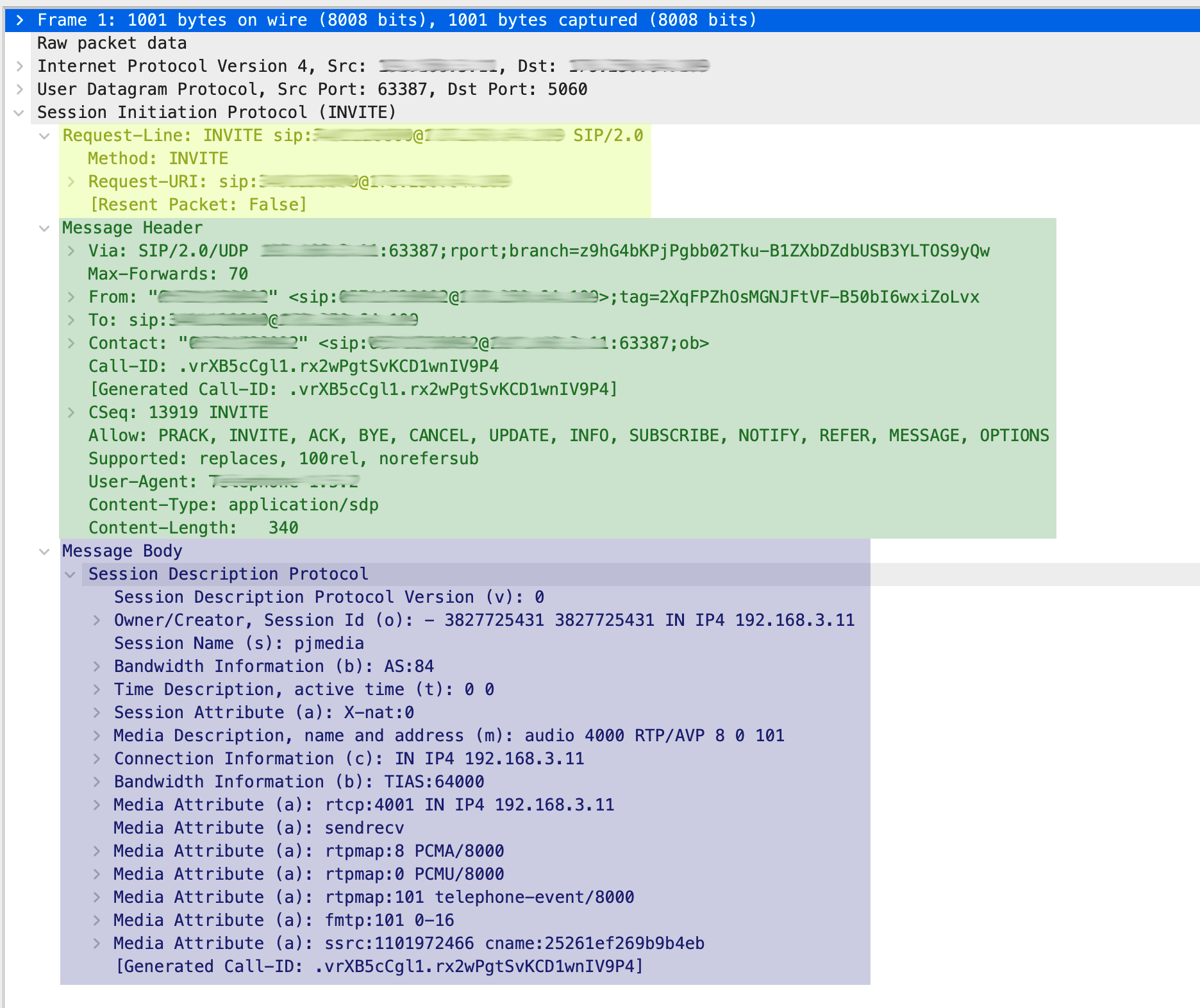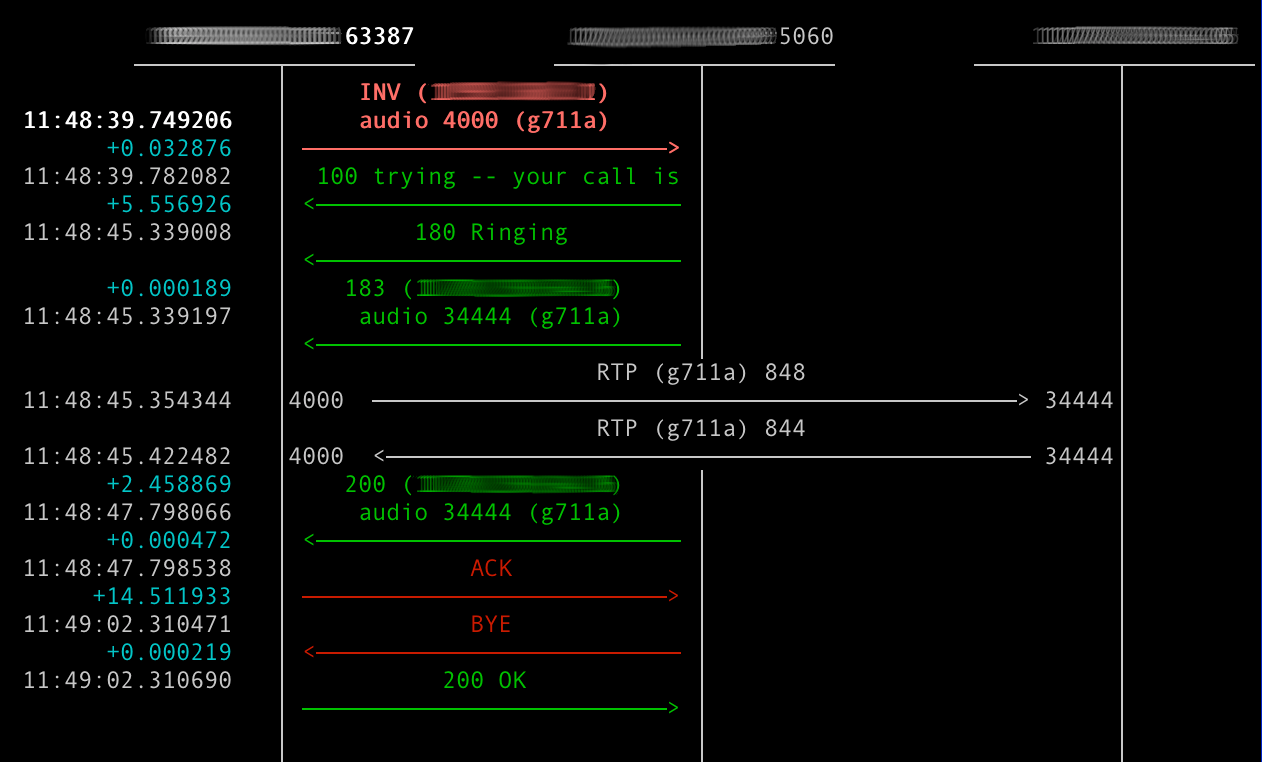New week and new episode, the fourth appointment with the mini-series about VoIP.
You can find the last here:
In this episode I’ll talk about the SDP & RTP:
- What is SDP
- Codec
- What is RTP
As I mentioned in the previous articles, SIP is only one of the protocol engaged in a VoIP call.
The SIP is the protocol that deals with the exchange of messages (on UDP or TCP) to establish, modify and terminate a session. However, it does not deal with the exchange of the audio stream.
The management and exchange of the audio stream is delegated to 2 other protocols: the SDP and the RTP.
The SDP protocol is used to describe the details of the multimedia session.
The details of the session can be found in the body of some SIP messages (such as the INVITE or 200 OK).
This is a screenshot of an INVITE take with Wireshark (one of the useful tools for debugging the SIP; we will see in detail in one of the next episodes)
As you can see, the SIP, as we already know, it’s composed of: Request-Line, Message Header (I talked about the most important headers in the last episode) and Message Body.
Let’s expand the package:
The Request-Line (yellow) is composed by the Method and the Request-URI (the destination of the packet).
The Message Header (green) is made up of all the headers we talked about last episode.
And the Message body (blue) contains the SDP informations.
The most important SDP informations to know are the c and the m lines.
In the Connection Data, the c field there is the IP address at which you want to receive the multimedia stream.
The Media Descriptions, the m field describes the port at which the stream is to be received and its encoding (the codecs you are allowed to use).
If you are talking to a SIP switch on the public network and in the c field you put your private IP (instead of your public IP), the call may have one-way audio, because the SIP exchange you want to contact will not know which is your public IP where to send the audio stream; so they will hear you but you don’t hear them.
Codecs are comparable to languages known to humans. If you have to talk to a person, you have to use a common language, otherwise you will not understand each other. If your mother tongue is different, before starting to converse, you will agree on which language to speak.
It could happen that you say: "I know English, French and Spanish and you?", and your interlocutor replies: "I know Russian, Slovenian and English, so let’s speak in English".
The only language common to you two is English and therefore your communication will take place in English.
This is the mechanism that underlies the management of codecs in a VoIP communication.
Caller and callee declare in the SDP the supported codecs in order of preference.
In the presence of several common codecs between the caller and the callee, the first codec chosen by the callee is generally used.
In any case it is possible to have media streams with any of the supported codecs and they can change during the phone call.
To undo the declaration of support for a given codec (or to declare that a new one is supported) you need to send a new INVITE (RE-INVITE) with a new SDP.
It could happen that the two interlocutors do not have a language, a codec in common; in this case the communication cannot be established, unless there is a B2BUA in the communication that offers the Transcoding service, i.e. it will act as simultaneous translator.
Each codec has a numeric code and a name that identifies it.
The most used voice codecs in Europe are:
8 pcma (or g711-alaw)
18 g 729
9 g722
3 gsm
0 pcmu (or g711-ulaw)
13 comfort noise
101 telephone event
In the example above, you can see that the caller proposed the following codecs: 8, 0, 101 (Look in the Media Description m line).
The RTP (Real-time Transport) application protocol takes care of sending a media stream to the endpoint.
The only transport protocol used is UDP.
The port to which the stream is to be received is communicated in the SDP, in the field m.
In this image, taken with another tool (sngrep) that we will see in the next episode, you can see the SIP packets (red and green) and the RTP stream (white).
That’s all for this episode too.
Let me know what you think about it.
Thanks a lot for reading, sharing and comment this article.
Thanks to undraw.co for the beautiful illustration I used in the header
Cheers!
To be continued in " part #4: UA PBX, standard configurations " …


